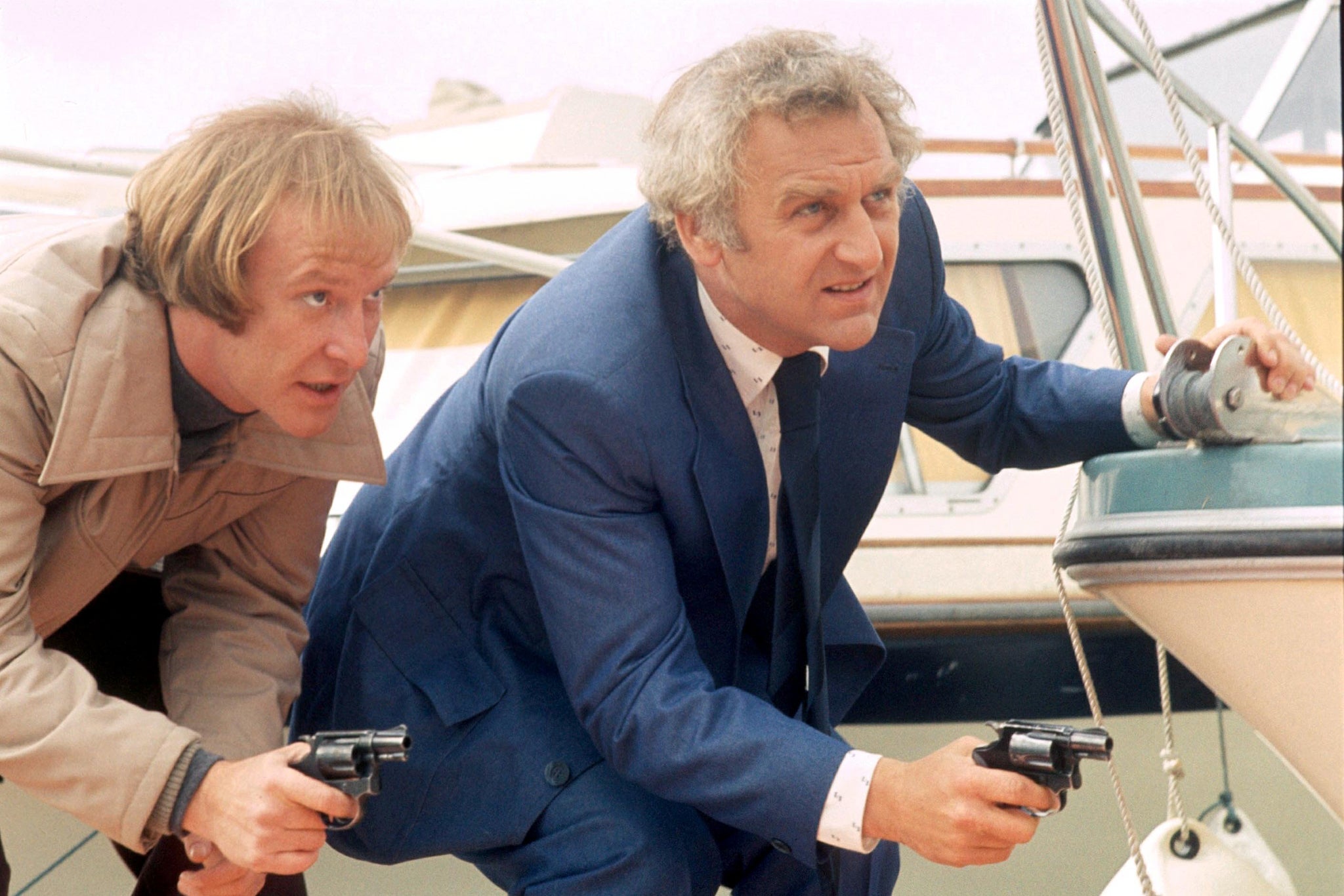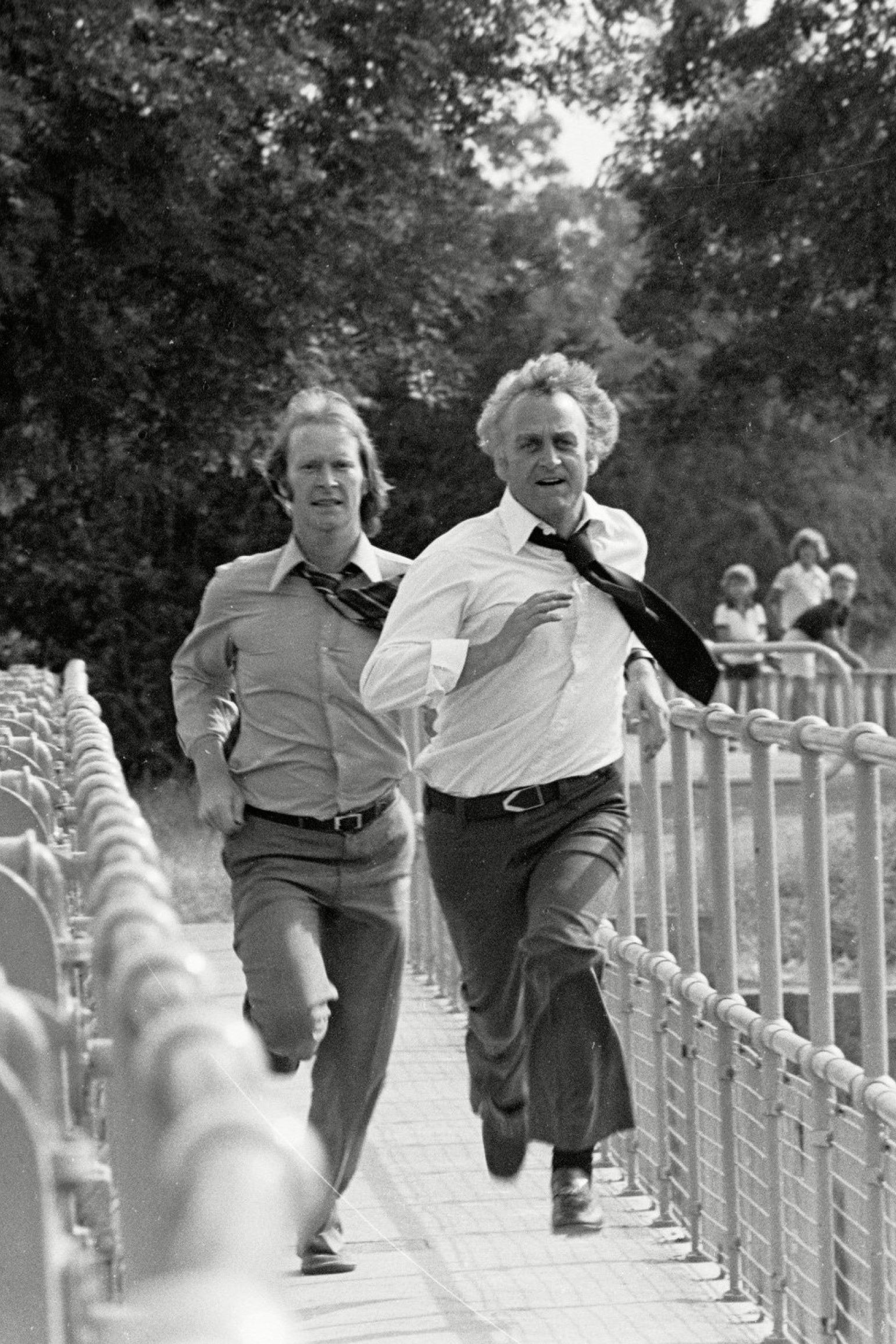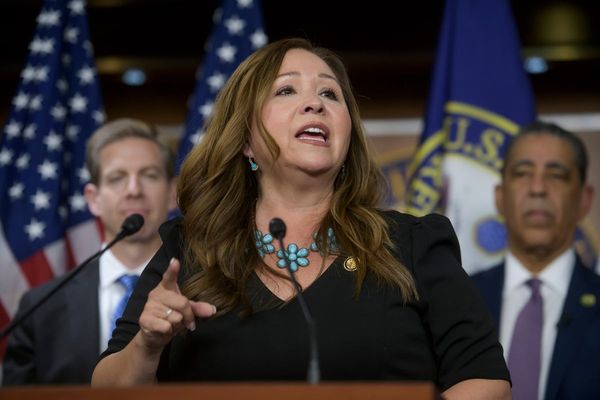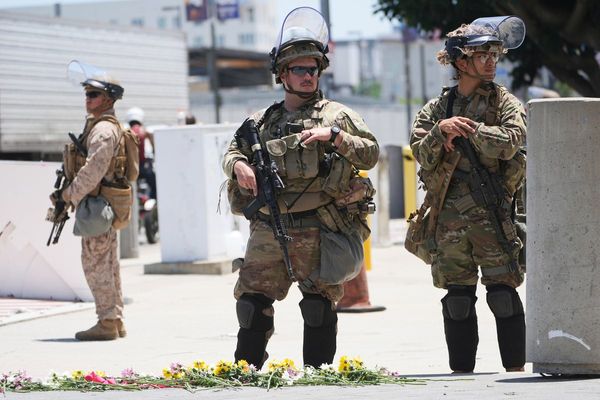
Shut it! This year, The Sweeney turns 50, so get your telly on. Because such is the crime drama’s enduring appeal that it’ll probably be on right this second – swearing, glaring, and kicking in doors. It might be on ITV4. It used to be on UK Gold. For a time, it even reran on Channel 5. But bash a few buttons and you’ll find him: a young (but decidedly not young-looking) John Thaw, laying down the law as Inspector Jack Regan, the character that changed British television drama for ever.
The Sweeney first hit our screens (and also gave a good walloping to every wayward villain in west London) in January 1975. Its second series, of a total of four broadcast on ITV, followed in September of the same year. Alongside Thaw, who died in 2002, Dennis Waterman co-starred as the affable, capable DS George Carter. Waterman died in 2022, leaving few members of the fictionalised Flying Squad (the series derived its name from cockney rhyming slang: “Sweeney Todd”) still with us, let alone still working. But Nick Brimble, who played DC Gerry Burtonshaw, never stopped. Today a mainstay of the detective drama Grantchester, the 80-year-old recalls his Sweeney debut in the programme’s sixth episode, “Night Out”.
“It might have been my first day,” says Brimble, “and we were doing a fight [scene] in a pub. I was there with Dennis, and we were running late. They said: ‘OK, Dennis, Nick, make sure you don’t get hurt. And go!’ Suddenly, the whole place – which I thought was full of extras, turns out it was the entire stunt register – started smashing chairs over each other’s heads and throwing bottles. I just stood there looking surprised!”
But that’s how it was, says the actor, who appeared in three series and the first of two Sweeney films (which made so much money they enabled production company EMI Films to make The Deer Hunter). During the pub fight, Brimble recalls Scottish actor Brian Coburn being knocked unconscious by a bottle that was meant to be made from toffee glass. These days, he says, projects don’t come close to this level of realism – or violence. “And obviously, you want to be safe,” adds Brimble, “but sometimes you feel that things are a bit restricted. The Sweeney was flying by the seat of your pants – fights, action, the whole thing.”
Cast members frequently arrived on set before seeing a script, and the wardrobe department would often call actors the night before filming to ask if they had a spare leather jacket for the shoot tomorrow. “I had suede. ‘That’ll do!’ they said,” Brimble recalls. “Even now, the show has a great energy,” he adds. “And people still respond to it, watching reruns all these years later. It doesn’t feel like some dusty old show. It feels, in a way, more lively than many things on TV now.”
There’s a reason for that. The Sweeney began life as “Regan”, a 1974 episode of anthology series Armchair Cinema. And, for all its envelope-pushing and convention-smashing, the show started off as something of a composite, borrowing elements from other crime dramas.
Gene Hunt is so obviously Jack Regan. With ‘Life on Mars’, my fear was always that someone was going to say, hang on a minute, isn’t this just ‘The Sweeney’?
Producers picked Thaw after seeing him play a military policeman in the drama series Redcap, while Waterman was chosen after he guest-starred in ITV’s crime saga Special Branch. Writer Ted Childs was inspired by Gene Hackman thrillerThe French Connection. Series creator Ian Kennedy Martin looked to films including the Michael Caine vehicle Get Carter, Sitting Target with Oliver Reed, and the gangster movie Villain, starring Richard Burton, to inform the show’s style. As such, when The Sweeney first aired – multiple influences under its belt, and a pilot in its pocket – it arrived fully formed. And there wasn’t any laborious world-building to do, because this wasn’t a far-fetched, fantastical London. This was the real thing – violence, hardship and all.
“The Sweeney is really important in British TV,” says Tony Jordan, a seasoned writer and the creator of programmes including Hustle and Beyond Paradise. “Because the Seventies was a tough time. A gritty time. It can feel like it was quite shiny, polished and Pop Arty. But it wasn’t really like that. Everything was in economic decline, crime was rising – particularly in cities – and it was all a bit fractious. Television didn’t truly represent that. Our crimefighters were things like The Avengers, all a bit nonsensical. There were exceptions, of course, but general mainstream television felt like a fantasy world. Heroes were heroes, and that’s the way it worked.”
Then came Jack Regan. “He lived in the world we all lived in. He had moral ambiguity; he worried. He was a flawed hero, but he was on our side. He did terrible things – like kidnapping people – but he’d never take a bribe for himself. There wasn’t a holier-than-thou reverence to it. He clearly had his demons, but still he did the right thing.”
And Regan, says Jordan, more closely resembled the police he knew as a rebellious teenager. In fact, many of the show’s catchphrases – “We’re the Sweeney, son, and we haven’t had any dinner”; “Get your trousers on, you’re nicked!” – were borrowed from real-life, off-duty Flying Squad members whom producers spoke to in pubs around Scotland Yard. Regan and co may have been fictional, but they were real: human, fallible, and capable of making mistakes. We’re used to such depictions these days, in Line of Duty, Happy Valley, or Jordan’s most lauded co-creation, innovative period police drama Life on Mars, starring John Simm as time-travelling DI Sam Tyler and Philip Glenister as his non-PC, punch-’em-up superior, Gene Hunt.
“I mean, look, Gene Hunt is so obviously Jack Regan,” laughs Jordan. “With Life on Mars, my fear was always that someone was going to say, hang on a minute, isn’t this just The Sweeney?”

They did, of course, but Life on Mars was Jordan’s love letter to The Sweeney, a show he’d always longed to write for (one of Jordan’s first writing credits was on Minder, another Waterman series). He was also part of a generation of screenwriters influenced by the show’s sharp dialogue – and its ability to reference and satirise the police-drama genre as a whole.
“It was aware of other TV,” Jordan explains. “At one point, Regan has a lollipop and George says, ‘Who loves ya, baby?’, referencing Kojak. He’d say stuff like ‘Life isn’t like Z-Cars’ or whistle the theme tune to Dixon of Dock Green. So audacious! How could you not love the audacity of that?”
The Sweeney resonated across culture. Both Squeeze and Kate Bush namedropped the series in their lyrics. Other channels tried to replicate its realism, with the BBC airing Target in 1977, a Southampton-set series that was swiftly cancelled when viewers complained about its level of violence (some of its writers and producers would eventually work on Shoestring). Even Nick Brimble starred in a Sweeney imitator.
“Between my episodes, I did a BBC series called You’re on Your Own with Denis Quilley, which was kind of modelled on The Sweeney. He was a private detective, I was a police sergeant, and we had the same sort of relationship as John and Dennis. It was perfectly good, but we’d run scenes in a rehearsal room with our lines marked out, then go to Television Centre to record it, making sure we didn’t slam doors and shake the set. Whereas, on The Sweeney, if there was a fight in a pub, you went and had a fight in a pub.”

It wasn’t about dissecting your lines or finding your character’s motivation, says Brimble. “It was about turning up and doing stuff. I think half of the show’s realism comes from the fact it was done very fast. Energy is the word that comes to mind – lots of testosterone flying about.”
Brimble later played Little John in Robin Hood: Prince of Thieves. On set, that film’s star, Kevin Costner, would constantly ask Brimble about London gangsters and his work on shows like The Sweeney. “I had to say, ‘I’m not one, Kevin – I’m just pretending, love.’”
But The Sweeney attracted A-listers itself. Among the guest stars were John Hurt, Brian Blessed, Richard Griffiths – even Morecambe and Wise. Ray Winstone made his acting debut in series three, and went on to star in a flimsy cinematic reboot that bore little resemblance to the original show. That film, released in 2012, spawned a French remake in 2015 starring Jean Reno, which has itself produced a sequel. In the Nineties, Nissan spoofed the show in an ad campaign, and Matt Berry recently described his short-lived sitcom Year of the Rabbit as “The Sweeney, but set in Victorian times”.
The Sweeney lives on, then – not least in every hard-edged, hard-drinking copper on television today. “Well, they’d like to be The Sweeney,” says Brimble. “But that realism and action and energy is hard to reproduce these days. It was the first one that felt real – that’s why people still aspire to it. But drama today is often too complicated. The Sweeney worked because it wasn’t complicated. It was an adrenaline-fuelled rush.”
The 18 most devastating TV deaths of all time
‘I was on the Circle Line when it happened’: 7/7, the day that changed the nation
Neil Gaiman has left Netflix’s The Sandman in an ethical minefield
Lena Dunham on Too Much: ‘I stepped back from acting after my body was dissected’
Netflix hit America’s Sweethearts is setting a sad example for girls







